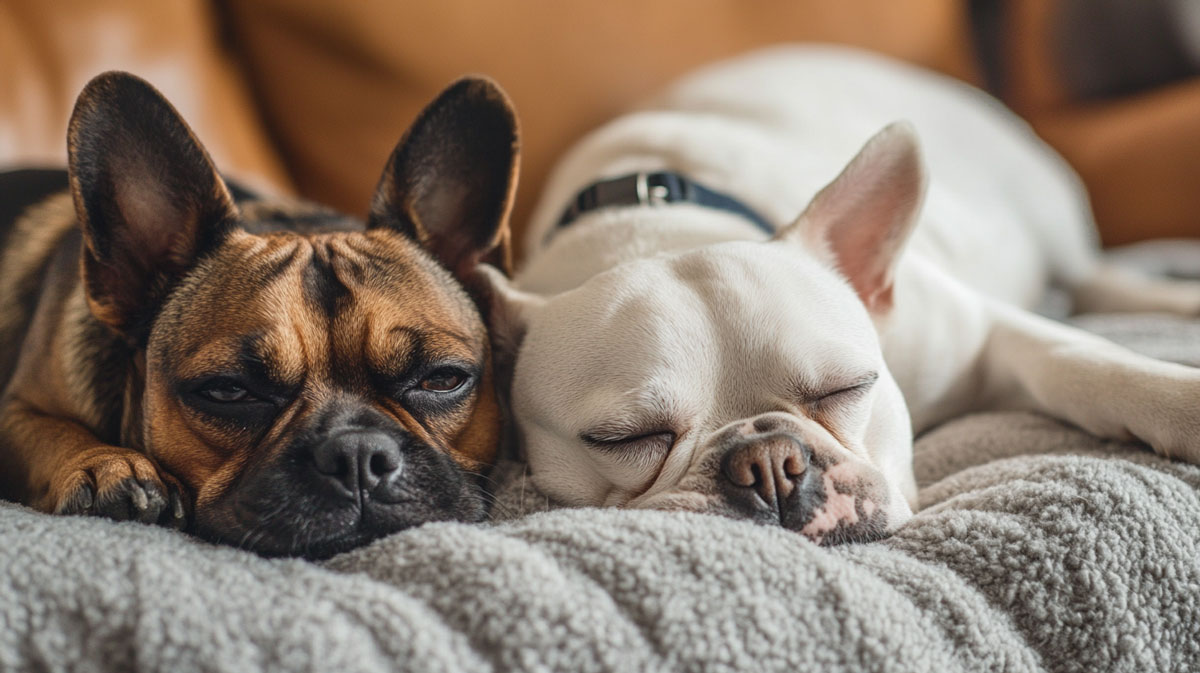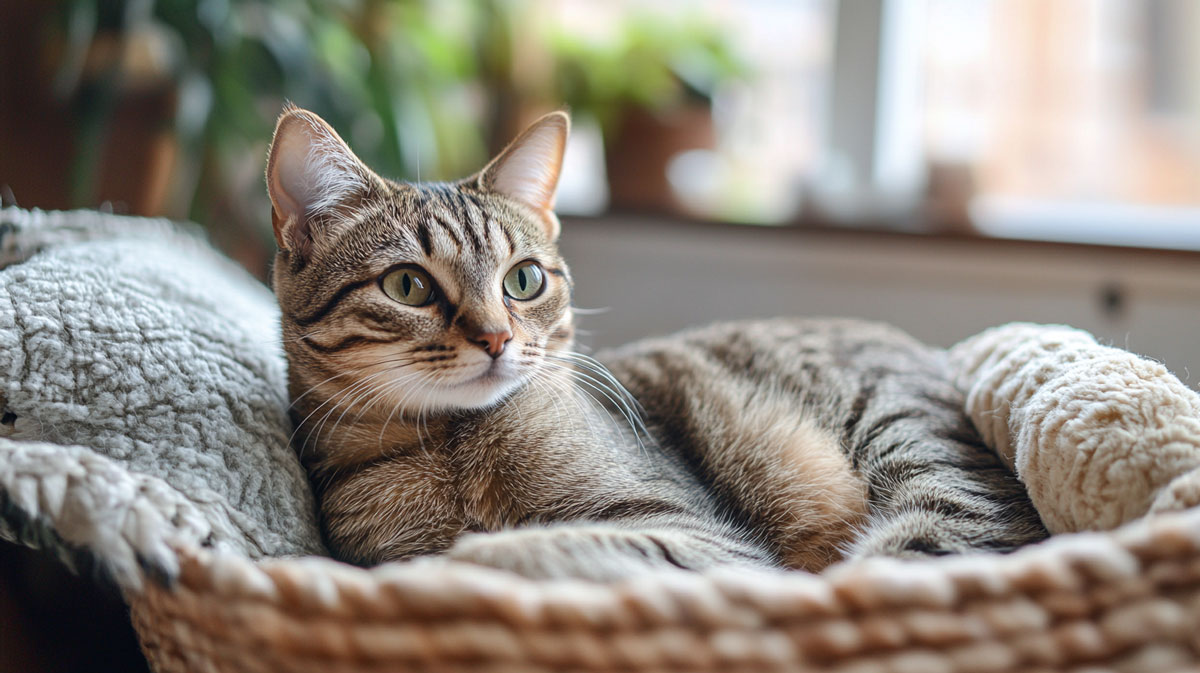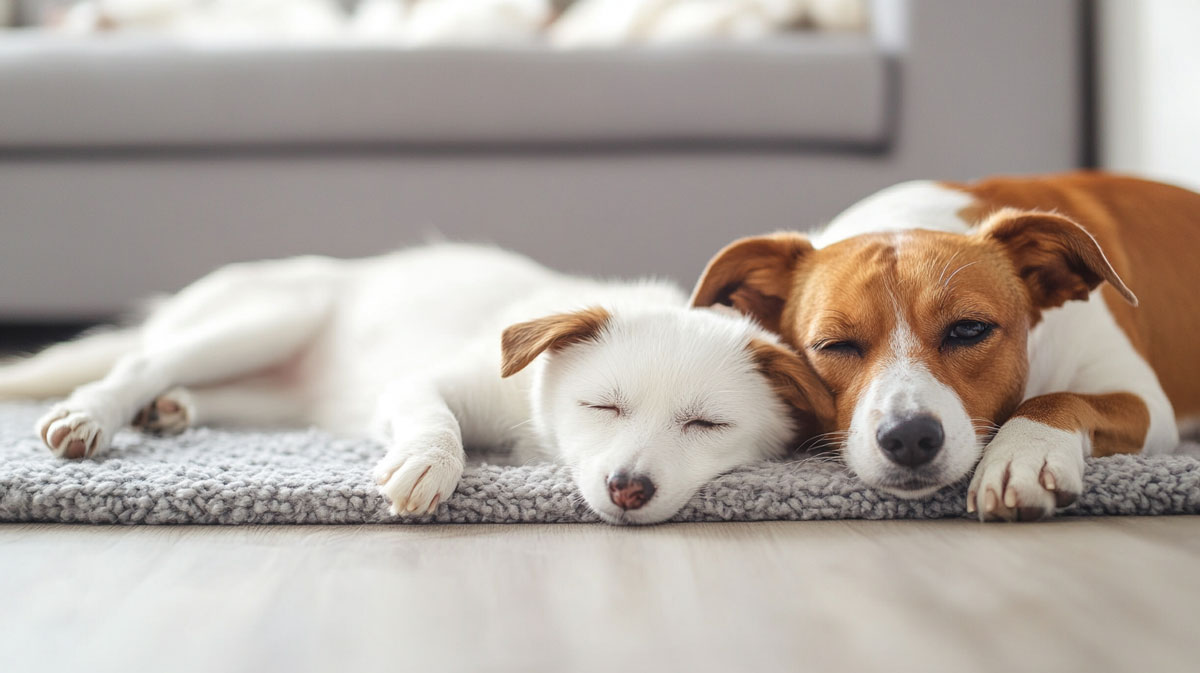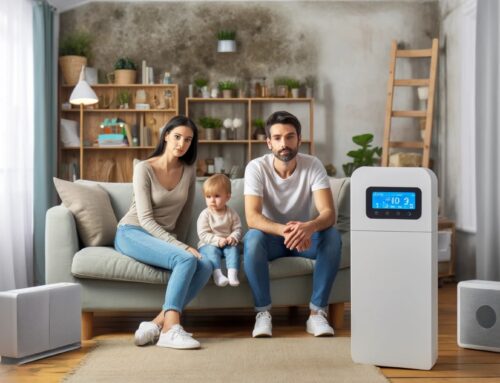August 19, 2024
How to Maintain Good Indoor Air Quality with Pets

Pets bring joy to our lives, but they can also impact indoor air quality. Pet hair, dander, and odors can make the air less clean. Good indoor air quality is crucial for a healthy home. Simple steps can help balance having pets and maintaining fresh air. Learn how to keep your home’s air clean while enjoying time with your furry friends.
How Pets Affect Indoor Air Quality

Pet Dander
Dander from mammals like cats, dogs, rabbits, and hamsters reduces indoor air quality. These tiny flakes of skin are released into the air. Pet dander particles are very small and light. They can float in the air for a long time.
Allergens
Pet allergens are microscopic and jagged. This shape makes them stick to surfaces like furniture and carpets. They can also cling to clothes and hair. Regular shedding of fur and skin, combined with outdoor air pollution, adds to the accumulation of allergens in the home, necessitating an air filter.
Indoor Pollutants
Pets can introduce other indoor pollutants too. For example, their fur can trap dust and pollen. When pets move around indoors, they spread these particles into the air. This increases indoor pollution levels.
House Dust Mites
House dust mites thrive on pet dander. These mites are another source of indoor allergens. They can cause allergic reactions in sensitive individuals. Keeping pets indoors can lead to higher levels of house dust mites and air pollution.
Solutions
There are ways to manage indoor air quality with pets. Regular cleaning is important. Vacuuming with a HEPA filter can reduce pet dander, air pollution, and other allergens. Air purifiers can also help by trapping airborne particles. To maintain a healthy living environment, consider regular residential air quality testing to ensure your home stays free from allergens and pollutants caused by pets.
Common Allergy Concerns with Pets

Pet Dander
Pet dander is a common allergen. It consists of tiny flakes of skin shed by cats, dogs, and other animals, contributing to air pollution. These flakes can float in the air and settle on furniture. Pet dander allergies often cause sneezing and itchy eyes.
Animal Saliva and Urine
Animal saliva and urine can also trigger allergies. When pets lick themselves, their saliva dries and becomes part of the dust at home, contributing to air pollution. This can lead to pet allergy symptoms like runny noses and watery eyes.
Business owners should also prioritize indoor air quality for both employees and customers by scheduling commercial air quality testing, especially in areas with high foot traffic and potential allergen sources.
Feces
Feces from pets can be another source of allergens. Cleaning litter boxes or cages can release particles into the air. These particles may cause shortness of breath for some people.
Symptoms
Common allergy symptoms include:
-
Sneezing
-
Runny or stuffy nose
-
Watery or itchy eyes
-
Shortness of breath
These symptoms are similar to those caused by other biological allergens.
Reptiles and Amphibians
Reptiles and amphibians might be better choices for people with allergies. They shed skin but do not produce airborne dander. This reduces the risk of allergic reactions.
Tips to Improve Air Quality with Pets

Air Filters
Use MERV 13 air filters. These capture pet dander, pollen, and dust. Regularly change these filters to prevent allergen buildup. This keeps the air clean.
Active Air Purifiers
Install a whole-home active air purifier. It removes various allergens and pollutants. This system works throughout the house. It helps everyone breathe easier.
Cleaning Habits
Vacuum often to reduce pet hair. Use a vacuum with a HEPA filter. Dust surfaces regularly. These actions help maintain good indoor air quality.
Pet Grooming
Brush pets frequently to control shedding. Bathe them as needed to reduce dander. Clean their bedding often. This lessens the effect pets have on the home’s air.
Effective Cleaning and Ventilation Practices
Vacuum Carpets
Vacuum carpets and furniture frequently to remove pet hair and dander. Use a vacuum with a HEPA filter for better results. HEPA filters trap tiny particles, which helps improve air quality in the household.
Wash Pet Bedding
Wash pet bedding and toys regularly to minimize allergen spread. Clean these items weekly using hot water. This practice reduces allergens that can affect indoor air quality.
Open Windows
Open windows to let fresh air in. This dilutes indoor air pollutants. Natural ventilation is effective when weather permits. It also reduces humidity levels, which can help control mold growth.
Mechanical Ventilation
Use mechanical ventilation systems if natural ventilation is not possible. HVAC systems with good filters can improve air cleaning effectiveness. These systems circulate and filter air, making it cleaner for homeowners.
Use Humidifiers
Humidifiers can help maintain optimal humidity levels in the home. Keeping humidity between 30-50% prevents dust mites and mold growth. Ensure humidifiers are cleaned regularly to avoid spreading bacteria.
Since high humidity can lead to mold growth, which worsens indoor air quality, it’s vital to conduct mold testing to detect hidden mold issues in your home.
Tools to Monitor and Enhance Air Quality
Air Quality Monitor
Using an indoor air quality monitor helps track allergen and pollutant levels. It measures many air pollutants such as dust, pet dander, and mold. Some monitors also detect gases like carbon monoxide. These devices provide real-time data, which helps in making informed decisions.
Whole-Home Air Purifier
Investing in a whole-home air purifier is essential for comprehensive air cleaning. This type of air purifier connects to the home’s HVAC system. It filters out airborne allergens and other indoor air pollutants throughout the entire house. Whole-home purifiers are effective for maintaining good indoor air quality.
Portable Air Purifiers
Consider portable air purifiers for rooms with high pet activity. These devices can be moved easily from one room to another. They are ideal for bedrooms or living areas where pets spend most of their time. Portable air purifiers help reduce localized concentrations of pet dander and other pollutants.
Efficiency Air Filters
Use high-efficiency air filters in your HVAC system. These filters capture smaller particles than standard filters. They help reduce the amount of airborne allergens circulating through the home. Regularly replacing these filters is crucial for optimal performance.
Active Air Purifier
An active air purifier uses technology like ionization or UV light to remove contaminants. Unlike passive filters, these purifiers actively clean the air. They are effective against both indoor and outdoor air pollutants that enter the home.
Final Remarks
Your pets bring joy, but they can also affect your indoor air quality. Allergens and dander are common concerns, but with the right practices, you can breathe easier. Regular cleaning, proper ventilation, and effective tools make a big difference.
Start today! Improve your home’s air quality for you and your pets. Monitor the air, clean frequently, and invest in good ventilation. Your health and comfort depend on it. Keep your home fresh and healthy for everyone. To find professional air quality services in your area, use our near me service locator to easily connect with trusted providers.
Frequently Asked Questions
How do pets affect indoor air quality?
Pets can shed fur, dander, and bring in outdoor pollutants. These particles can degrade air quality and trigger allergies.
What are common allergy concerns with pets?
Common concerns include pet dander, saliva, and urine. These allergens can cause sneezing, itchy eyes, and respiratory issues.
How can I improve air quality with pets at home?
Regularly groom your pets and clean their living areas. Use air purifiers with HEPA filters to reduce allergens.
What are effective cleaning practices for homes with pets?
Vacuum frequently using a vacuum with a HEPA filter. Wash pet bedding weekly and clean hard surfaces to remove dander.
How important is ventilation for indoor air quality with pets?
Proper ventilation is crucial. It helps remove stale air and reduces the concentration of indoor pollutants.
Are there tools to monitor indoor air quality?
Yes, consider using air quality monitors. They track levels of pollutants and provide real-time data to help you maintain a healthy environment.
Can air purifiers help with pet-related air quality issues?
Absolutely. Air purifiers with HEPA filters capture pet dander, fur, and other allergens, significantly improving indoor air quality.




